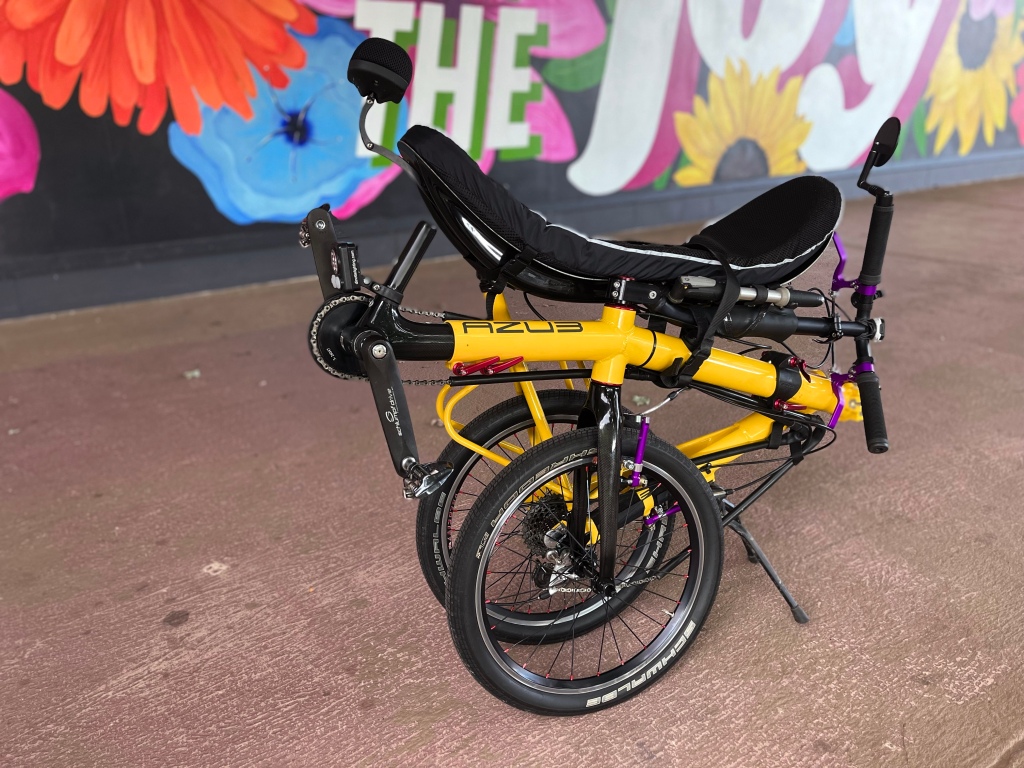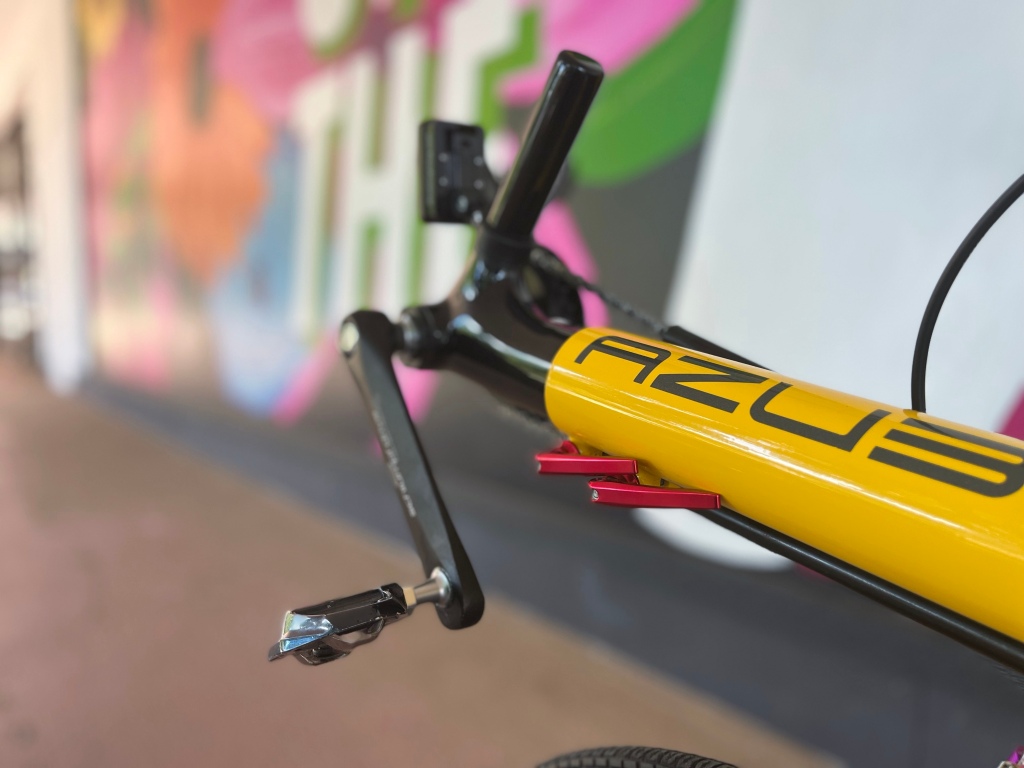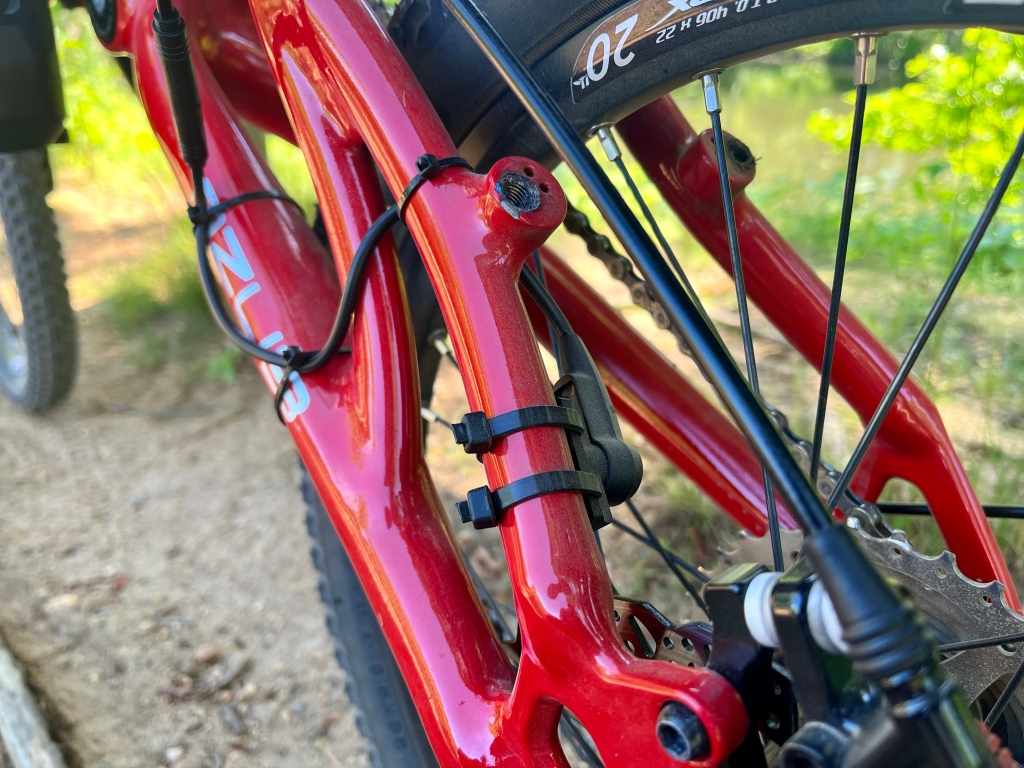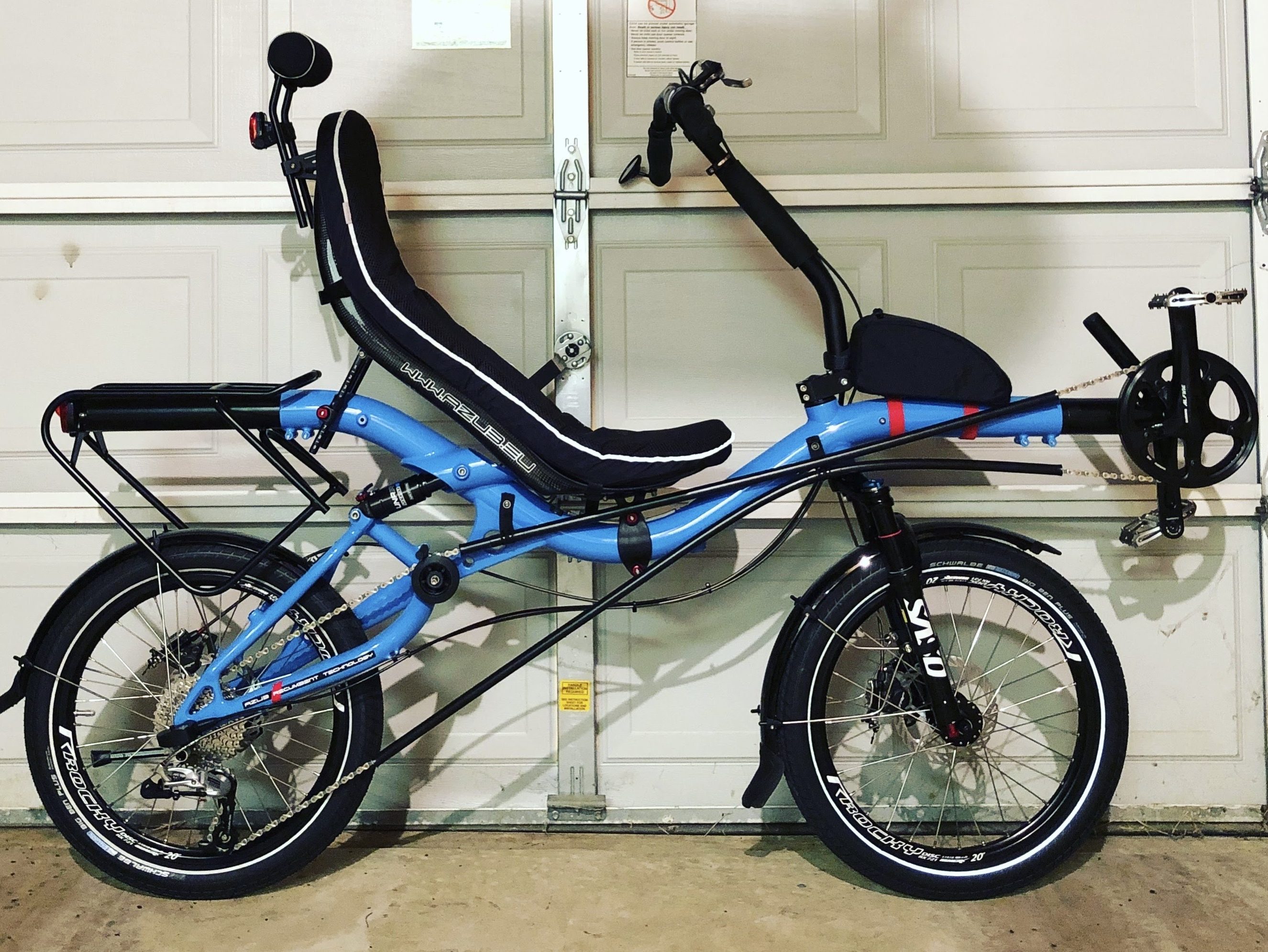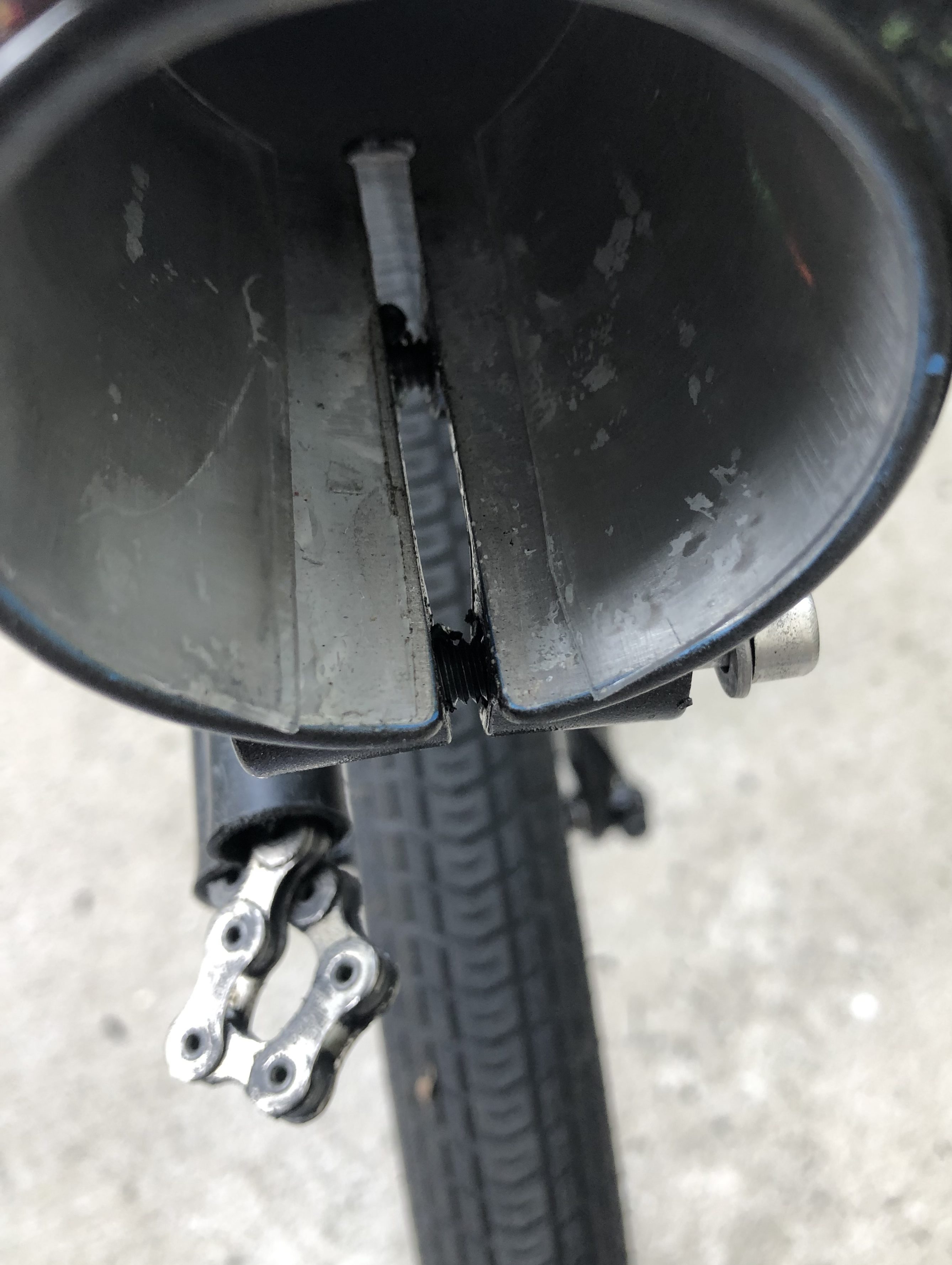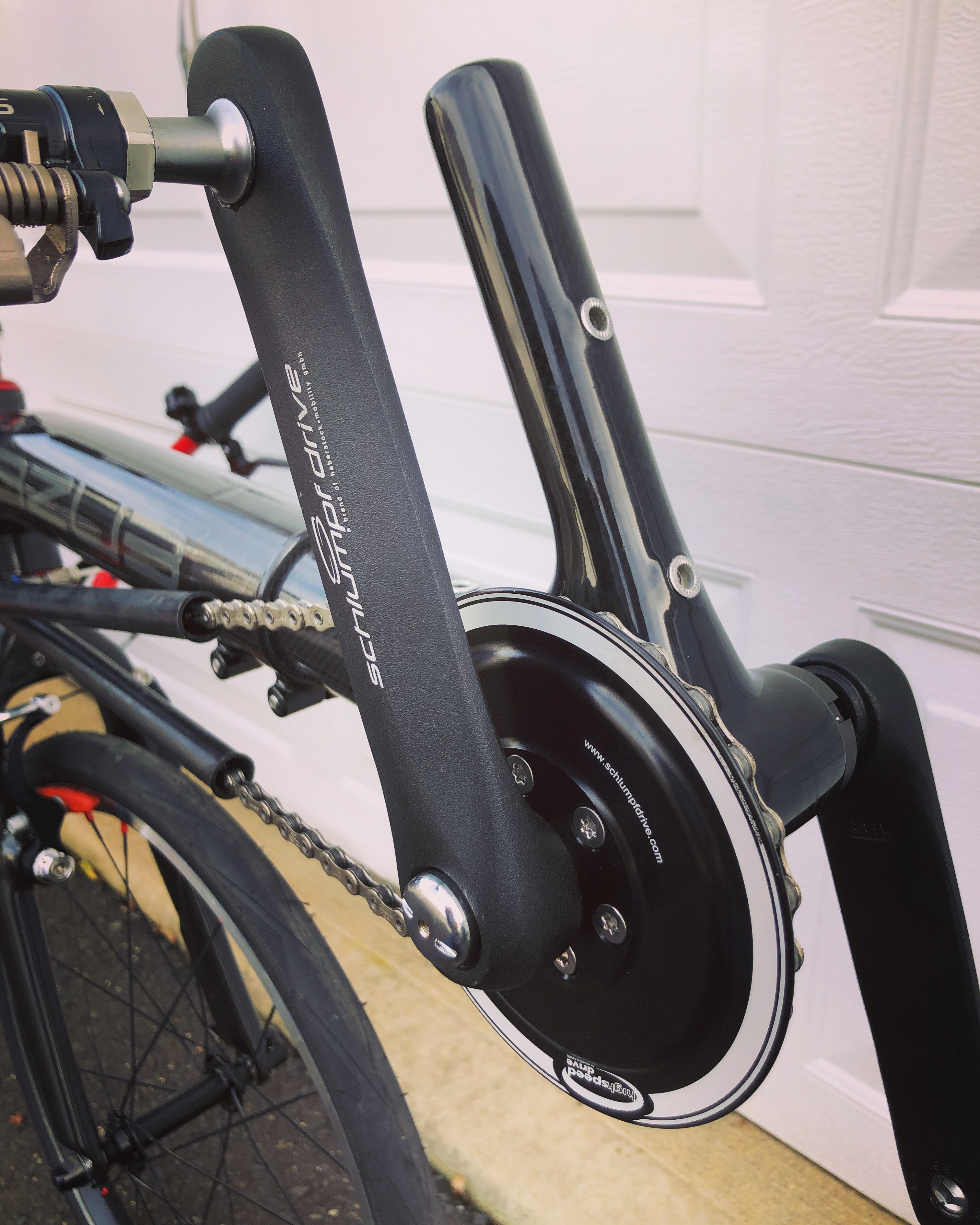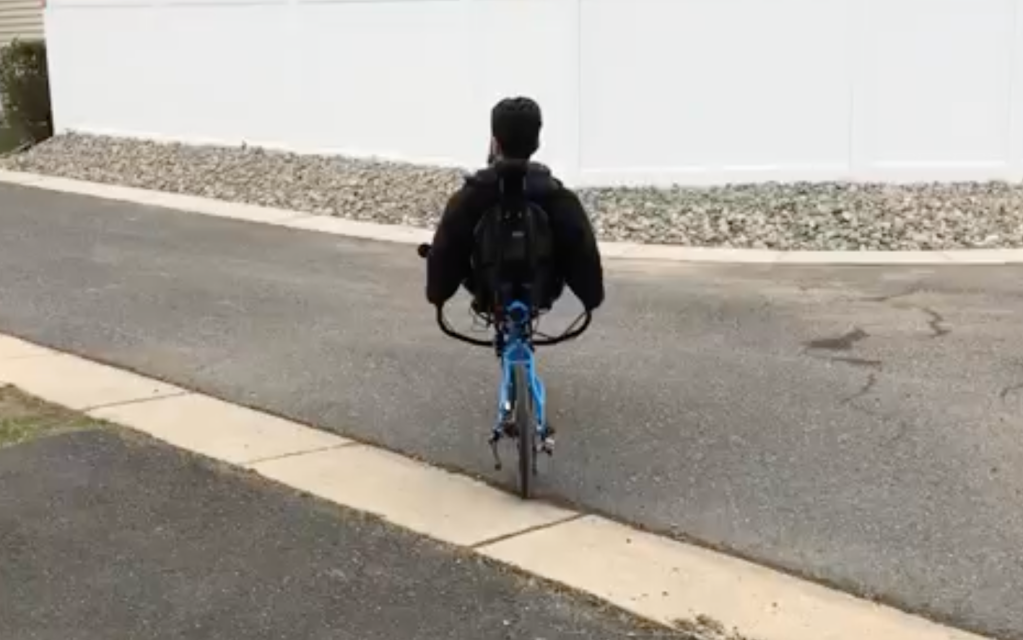Today’s review will focus on a different kind of bike: the stand-up bike or SUB. Once again I’m drawn to an unusual looking bicycle, but this one won’t draw quite as much attention as a recumbent. Unlike recumbent bikes that have you reclining on a large seat as you pedal, SUBs are essentially bikes without seats, making you stand upright. You may be surprised that I’m reviewing a bike that is so opposite to a recumbent, but what I’ve recently learned these past few months is that SUBs offer many similar health benefits as recumbents.
These bikes fit nicely in the space between running and cycling. By providing the upright position of a runner, there is less strain on the back, shoulders, and arms compared to being hunched over on a typical diamond-framed bike. At the same time, the pedaling motion is free of impact forces on the lower joints. So runners can enjoy the feeling of running without the hard impacts, and cyclists can enjoy riding without saddle soreness or any of the other aches commonly associated with regular bikes.

There are only a handful of SUB manufacturers. The most popular probably being ElliptiGO, followed by a few others: Cyclete, StreetStrider, HalfBike, and MeMover. SUBs can be distinguished mainly by their style of pedaling which includes a typical circular motion, a long-stride elliptical motion, a teardrop-shaped motion, or even a stepping motion.
The ElliptiGO SUB
Last September I had the opportunity to test ride two ElliptiGO standing bikes: the “3C” elliptical pedaling bike and the “SUB” circular pedaling bike. The elliptical bike was unique, but I found it large, heavy, and awkward to pedal. Plus I couldn’t justify the 3C’s steep price tag when the ElliptiGO SUB was a fraction of the cost and offered similar benefits. In the end, I bought a floor model matte blue ElliptiGO SUB at a local fitness shop.
The ElliptiGO SUB has an aluminum frame and rigid steel fork. The drivetrain is a trigger-shifting 8-speed Shimano Altus rear derailleur (11-34 cassette) and 60T chainring (309%). It has 20” aluminum wheels with 1.5” Kenda Kwest tires and Shimano rim brakes. The pedals are oversized platform pedals designed to support your entire foot. The steering column is height adjustable with indexed locking. The handlebars are a medium width supplied with ergonomic grips and a kickstand comes standard. Taken together, I think these specs make an attractive package that is the lightest and most compact stand-up bike (29 lbs and 66” length).
One thing to note is that the 20” ElliptiGO SUB is no longer in production and instead ElliptiGO now offers more costly, larger wheeled versions of their circular pedaling stand-up bikes (MSUB/RSUB). I would have liked to see them continue to offer the smaller SUB as their lowest tier bike to introduce new riders to the benefits of stand-up bikes.
Fun in the SUB
While I was looking forward to the upright posture and low-impact benefits of the SUB, the sheer fun and convenience of riding it took me by complete surprise. The SUB has relegated my Azub e-MINI recumbent to the back of the garage, becoming my daily commuter for the past 4 months. This bike works well for short, brisk rides to work and around town. Unlike a recumbent bike, the SUB is very easy to hop on and off, navigate tight turns, and maneuver around obstacles. The additional 12” of height you gain on the SUB gives you a great view of the road ahead and makes you easily visible to others. Hills are conquered with relative ease with the help of your standing weight on the pedals, unlike my experience patiently spinning to slowly climb on a recumbent bike.
Elliptigo’s claims about low impact are not exaggerated, and standing the entire time makes for an intense cardio session. For someone with chronic low back issues, the upright position combined with the pedaling motion doesn’t bother my back. Being able to rock side-to-side while pedaling adds a welcome upper-body component to the workout as well.
Limitations
Despite these benefits, the SUB does have its shortcomings. Without a seat, you likely won’t want to ride this on day-long tours. There are individuals out there doing century rides on stand-up bikes, but not this non-athlete.
Another reason these stand-up bikes make for poor touring bikes is there’s no place for a rear rack to carry panniers or trunk bags. When riding the SUB, it will just be you and what you can carry on your body such as a backpack. To transport a small amount of stuff, you could add a handlebar bag, but you’ll never get the capacity of full-sized rear panniers. I added a small Burrito handlebar bag to stash my keys and phone. Ideally, I’d like to see ElliptiGO engineer a front rack system to support a large basket or bag and front panniers to give commuters a bit more cargo space. This would expand the versatility of these bikes from just pure fitness machines to something more utilitarian.
I was surprised by the lack of bottle cage bosses on the frame, which meant buying a Topeak cage mount to attach to the steering column. I also would have liked to see mounts for full-length fenders. Unfortunately, ElliptiGO only offers a full fender set for their RSUB model and just a partial rear fender for the SUB.
Final remarks
I’ve been espousing the benefits of recumbent bicycles for so long that I never imagined enjoying such a different kind of bicycle this much. If you’re a current or former runner or a cyclist who wants to ride without the discomfort of a regular bike, then the ElliptiGO SUB (or any other stand-up bike) is worth trying. However, if you need a bike for running errands, commuting, or going on long tours, you may find yourself limited by the SUB’s lack of cargo-carrying capacity.



